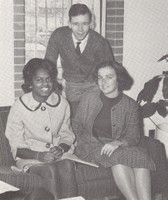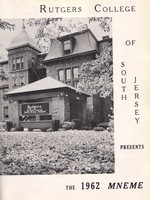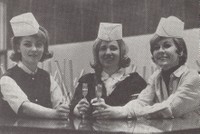
Some students, like Richard Aregood ’65, who won the Pulitzer Prize in 1985 for editorial writing while at the Philadelphia Daily News, actually liked the ragtag beginnings of the campus.
“The Camden Campus was far from the little jewel it is today, although it had its


Student life at Rutgers–Camden in the 1960s reflected all of the social changes and political turmoil affecting the nation. As the Civil Rights movement gained momentum and the controversy surrounding Vietnam intensified, student activism also grew.
But Rutgers–Camden students weren’t concerned only about the state of the nation; they were also making impressive strides in their academic pursuits. Athenaeum, the Honor Society of the College of South Jersey, was established in 1952 with five members. Nearly a decade later and the society boasted more than 60 members.
Barbara Wainwright Capuano, CCAS ’62, a Delta Rho sister, recalls campus life in the early 60s at Rutgers–Camden.
“Looking back, the Rutgers–Camden Campus in the 60s was rather modest – we ate lunch in the basement of an old

As at other colleges in the nation at this time, the university’s relationship with minority students on all three campuses became contested. Despite the expanding number of students, there were still less than 20 minority students enrolled at Rutgers–Camden by the late sixties. Campus organizations such as the Black Student Unity Movement were formed. To call attention to their cause, a group of African American students peacefully “took over” the Campus Center one Sunday night in 1969 and kept it closed until the following afternoon. The incident, and similar activity on the New Brunswick and Newark campuses, helped raise Rutgers’ awareness of the needs and interests of minority students.
Learning how to think about the world wasn’t something Rutgers–Camden students culled from classes alone. It was through demonstrations like these that made an impression on Scarlet Raptors.
“...It is hoped that, in the years to come, this [Mneme] will serve as a vivid reminder of the days in which the most vital foundations of your way of life, your own ‘philosophy,’ were formed. If this aim is achieved, our efforts will have been more than justified.”
Media Contact: Cathy K. Donovan
(856) 225-6627
E-mail: catkarm@camden.rutgers.edu